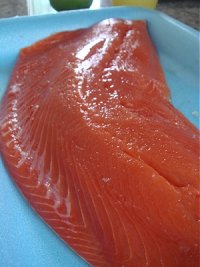| ||||||||||
| ENZYMES | TATTVAS OILS | GEM ELIXIRS | CRYSTALS | LIFESTYLE PRODUCTS | BLOG |
The Story of Vitamin Dby Boyd Martin With all the hoopla lately about Vitamin D, let's take a look into how this vitamin came into prominence, and what caused its value to be so underestimated.
With all the hoopla lately about Vitamin D, let's take a look into how this vitamin came into prominence, and what caused its value to be so underestimated.
The effects of a Vitamin D deficiencies have been well known since the 1700's--mainly, rickets, the debilitating bone-softening condition. The cause of rickets was a mystery until around 1910 when serious research went into to the cause of rickets. This type of research--that diet and nutritional deficiencies could directly cause disease--is what led to the naming of the various vitamins. Vitamin D was named because it was the fourth vitamin to be "discovered," and added to the list. Vitamin D was named in 1927 after a series of experiments on dogs revealed a denatured form of Vitamin A prevented rickets in the animals, thus it was assumed another factor was causing the effect. Other experiments conducted around the same time demonstrated that human skin sun exposure also created Vitamin D. Oddly, the newly named Vitamin D is technically not a vitamin at all--it's a steroid hormone produced in the liver via the melatonin in the skin, as well as abundantly in dairy products and some plants. But, because it was a "nutritional agent," and because deficiencies in it caused a widespread disease, it made it on to the vitamin list. By 1932, it was widely accepted that to prevent rickets, humans need either sun exposure or cod liver oil, which was found to have the highest content of the vitamin. The government stepped in at this point and created a food fortification program to put Vitamin D into milk--since it was assumed everyone drank milk, and embarked on a media campaign that persists to this day. Vitamin D is a general term for either Vitamin D2 or D3, or both. Vitamin D2 (made from ergosterol) is produced by invertebrates, fungus and plants in response to UV irradiation; it is not produced by vertebrates. Little is known about the biologic function of vitamin D2 in nonvertebrate species. Because ergosterol can more efficiently absorb the ultraviolet radiation that can damage DNA, RNA and protein it has been suggested that ergosterol serves as a sunscreening system that protects organisms from damaging high energy ultraviolet radiation. Vitamin D3 (cholecalciferol) is made in the skin when it reacts with UVB ultraviolet light when the UV index is greater than 3. This requires a high enough sun angle, which occurs daily within the tropics, daily during the spring and summer seasons in temperate regions, and almost never within the arctic circles. Up until 2009, a reliable way to measure Vitamin D levels in the human body was not available. Because of this, there was no widespread testing for levels of the vitamin. Falsely low or high values were being obtained depending on the particular test or laboratory used. Beginning in July 2009 a standard reference material became available which should allow laboratories to standardise their procedures. Once the standard was in place, and testing for Vitamin D levels became much more common, it came to light that general levels in the population were much too low. Hence, the recent avalanche of information on the topic. Levels for Good Health There is still some disagreement concerning the exact levels of 25-hydroxy-vitamin D needed for good health. A level lower than 10 ng/mL (25 nmol/L) is associated with the most severe deficiency diseases: rickets in infants and children, and osteomalacia in adults. A concentration above 15 ng/ml (37.5 nmol/L) is generally considered adequate for those in good health. Levels above 30 ng/ml (75 nmol/L) are proposed by some as desirable for achieving optimum health, but there is not yet enough evidence to support this. It is possible to overdose with Vitamin D (as well as Vitamin A due to their fat soluability) from taking supplements in excess. Being fat soluble, vitamin D can accumulate in the tissues and become toxic. Documented toxicity, however, is rare and often involves either individuals with specific vitamin D hypersensitivity or accidental misuse of the substance. That said, Vitamin D is much safer than previously thought. Exposure to sunlight for extended periods of time does not normally cause vitamin D toxicity. This is because within about 20 minutes of ultraviolet exposure in light skinned individuals (3–6 times longer for pigmented skin) the concentrations of vitamin D precursors produced in the skin reach an equilibrium, and any further vitamin D degrades the moment it is produced. According to some sources, endogenous production with full body exposure to sunlight can be as high as 250 µg (10,000 IU) per day.
Fatty fish, such as salmon, are the most common natural sources of vitamin D. There are also concentrated forms of olive oil that provide high levels of Vitamin D. Other natural sources of vitamin D include:[5]
As more research is done, more and more conditions and diseases seem to be linked to Vitamin D deficiencies. In fact, it has recently been found that there are more Vitamin D receptors in the body than any other vitamin, verifying the extensive need for the vitamin by the human body. So, get plenty of sunlight during the spring and summer, and in autumn and summer, make sure to supplement your Vitamin D! |
 Natural sources
Natural sources